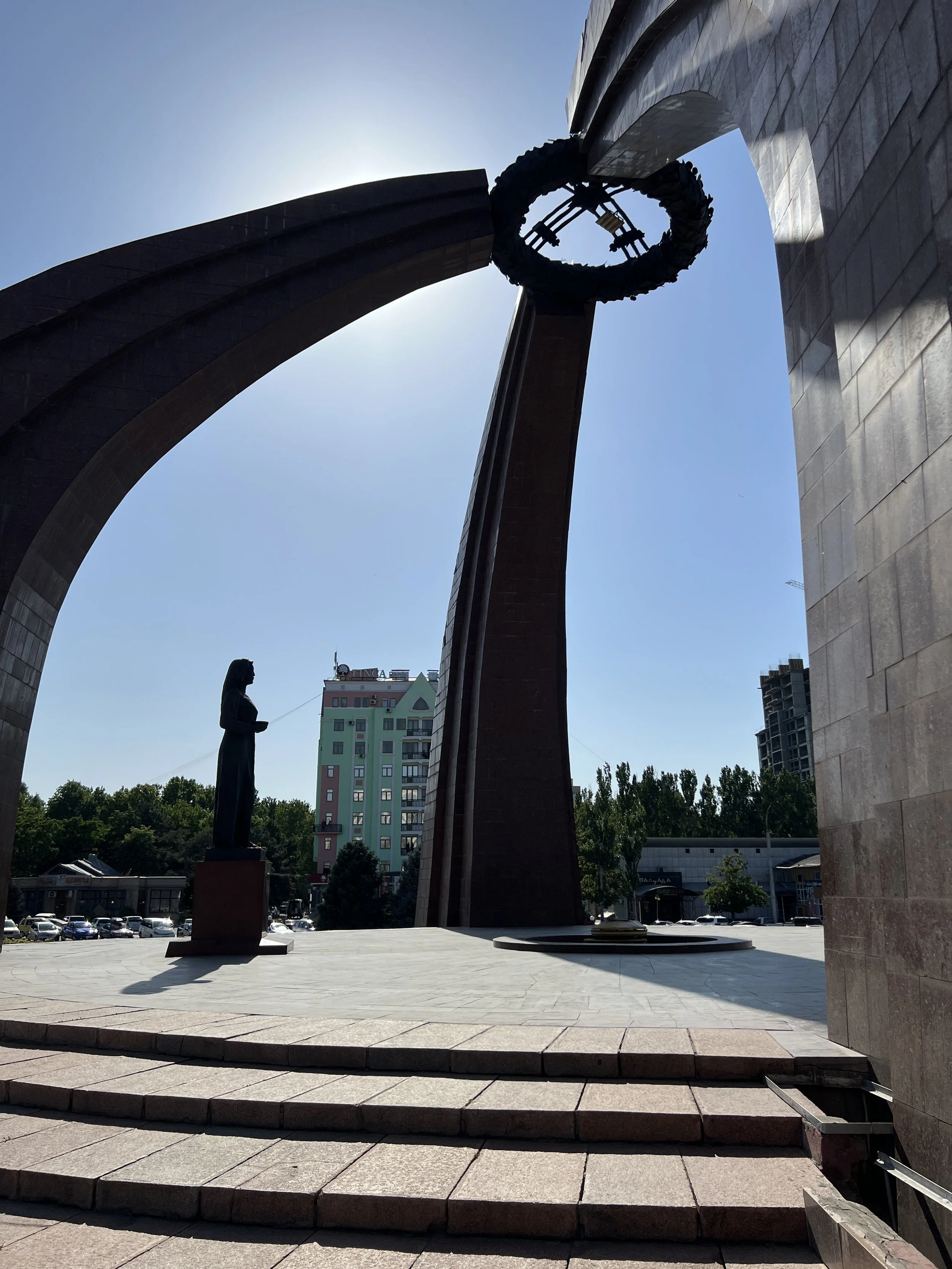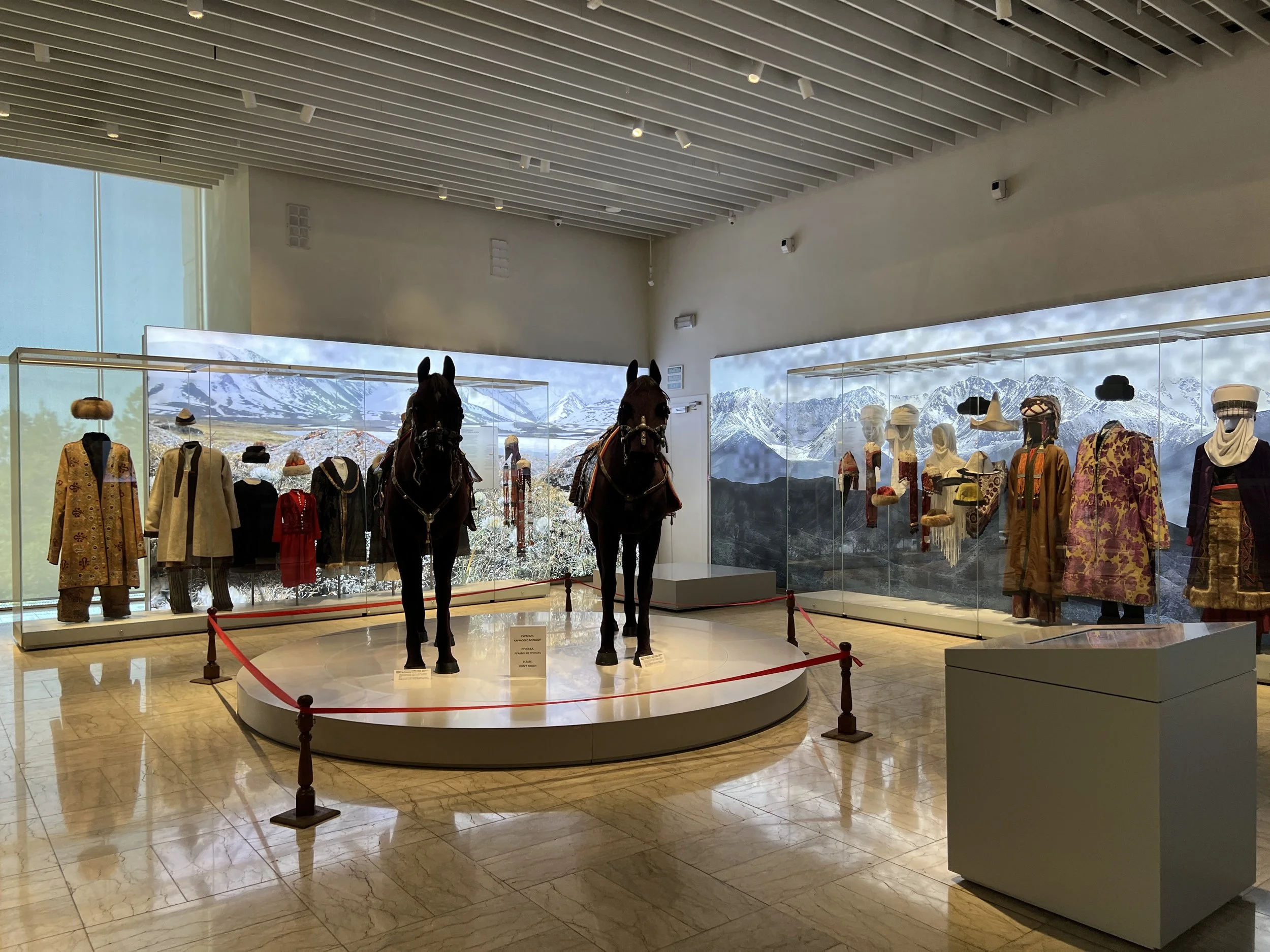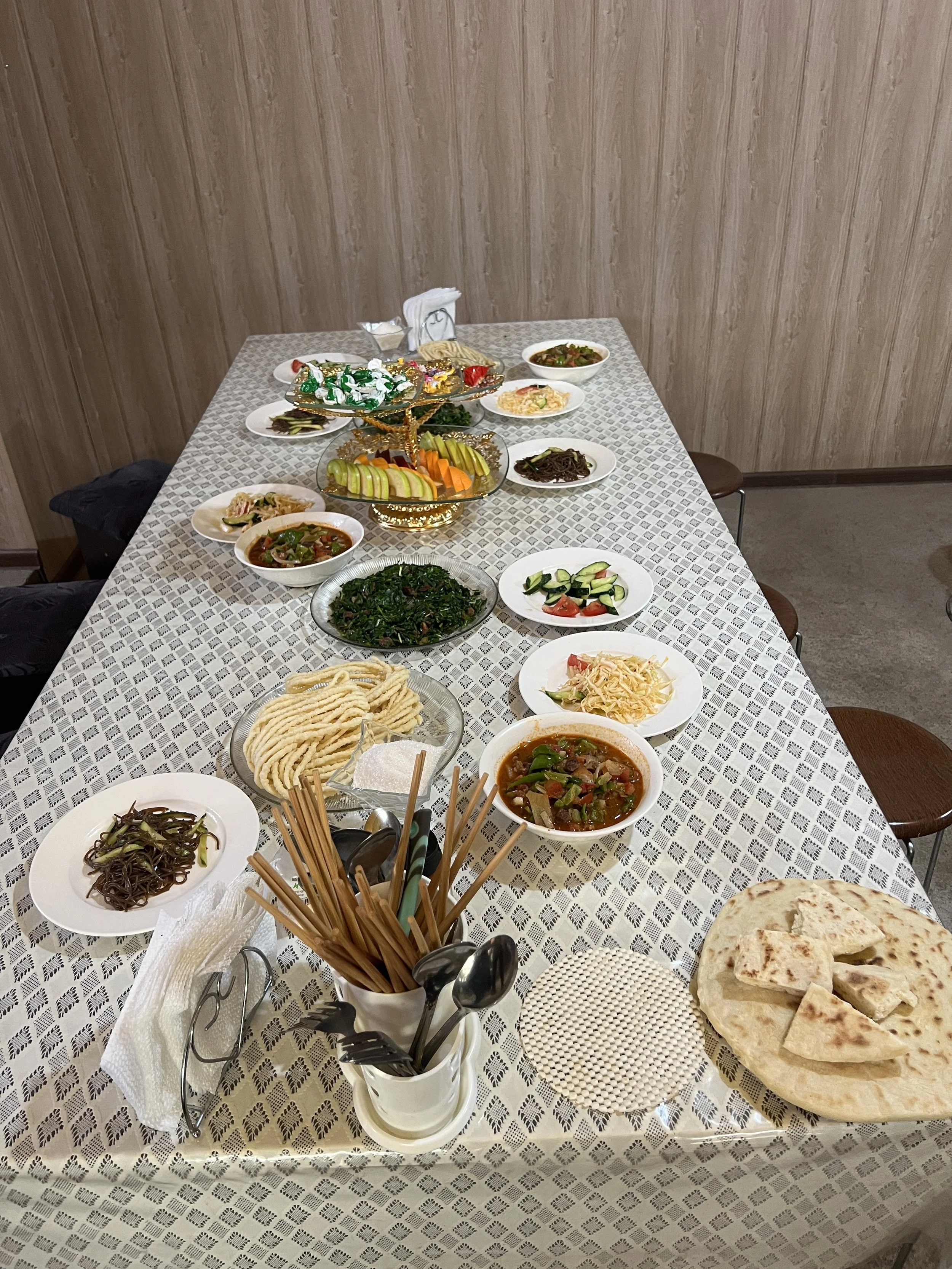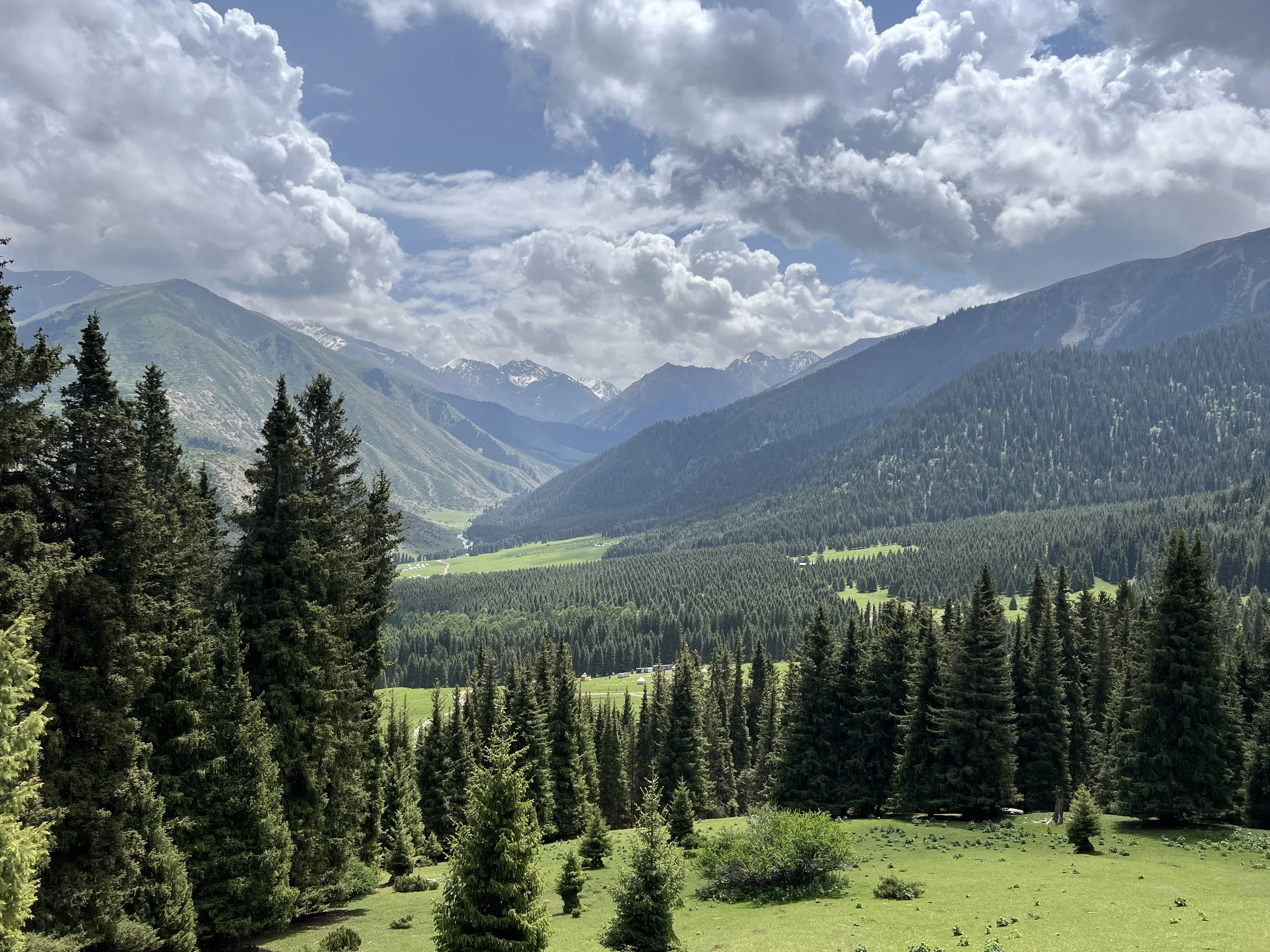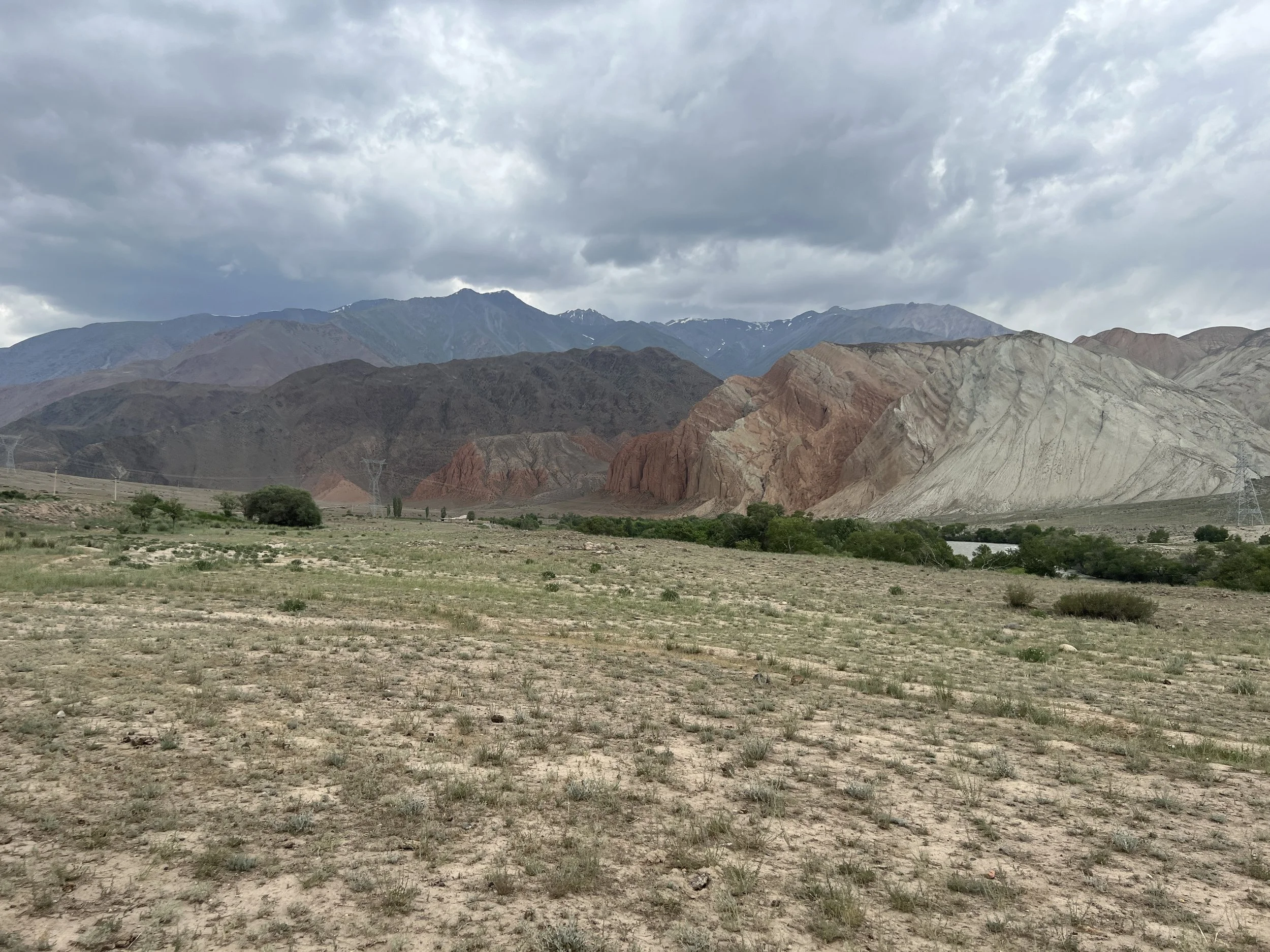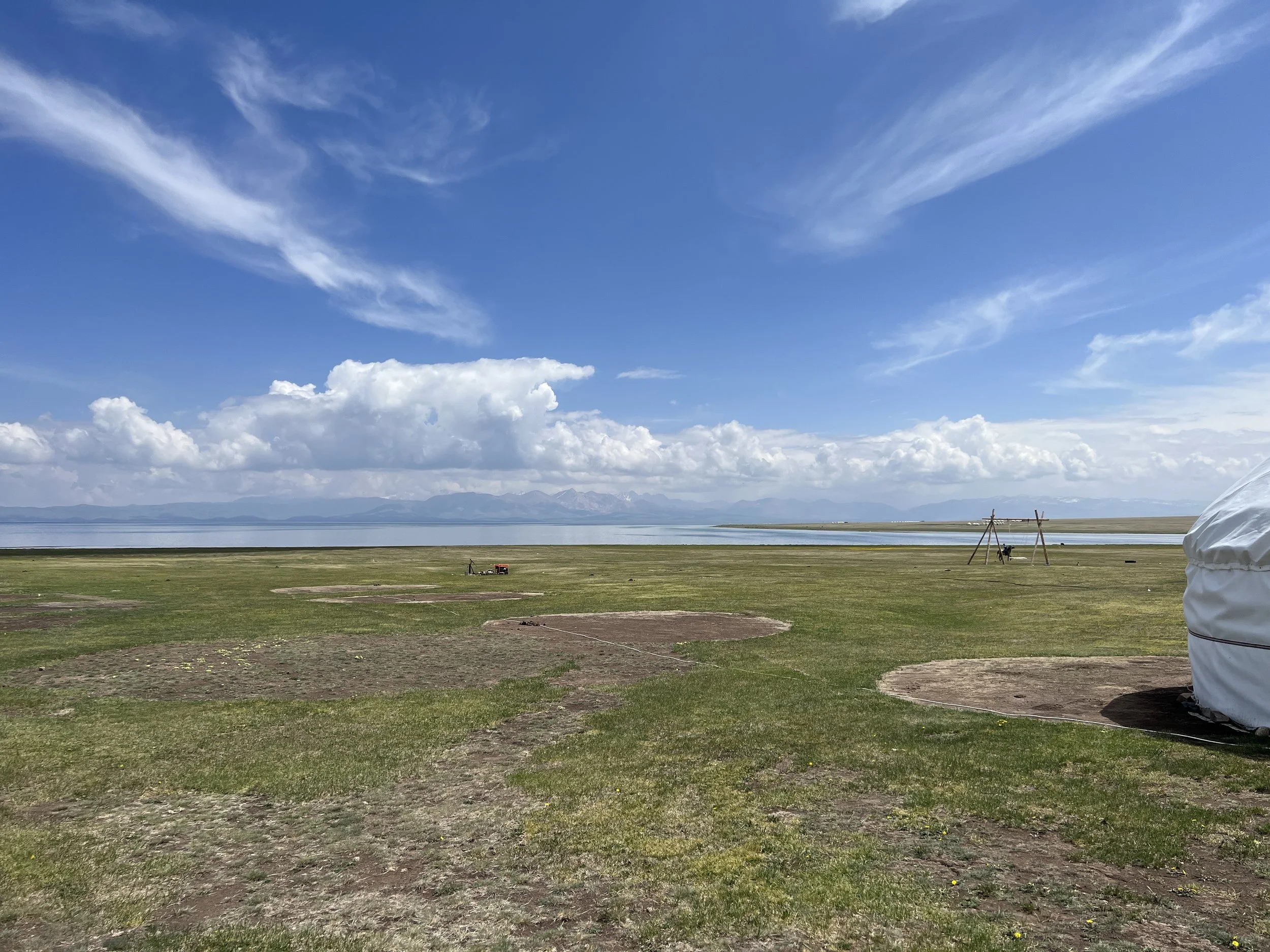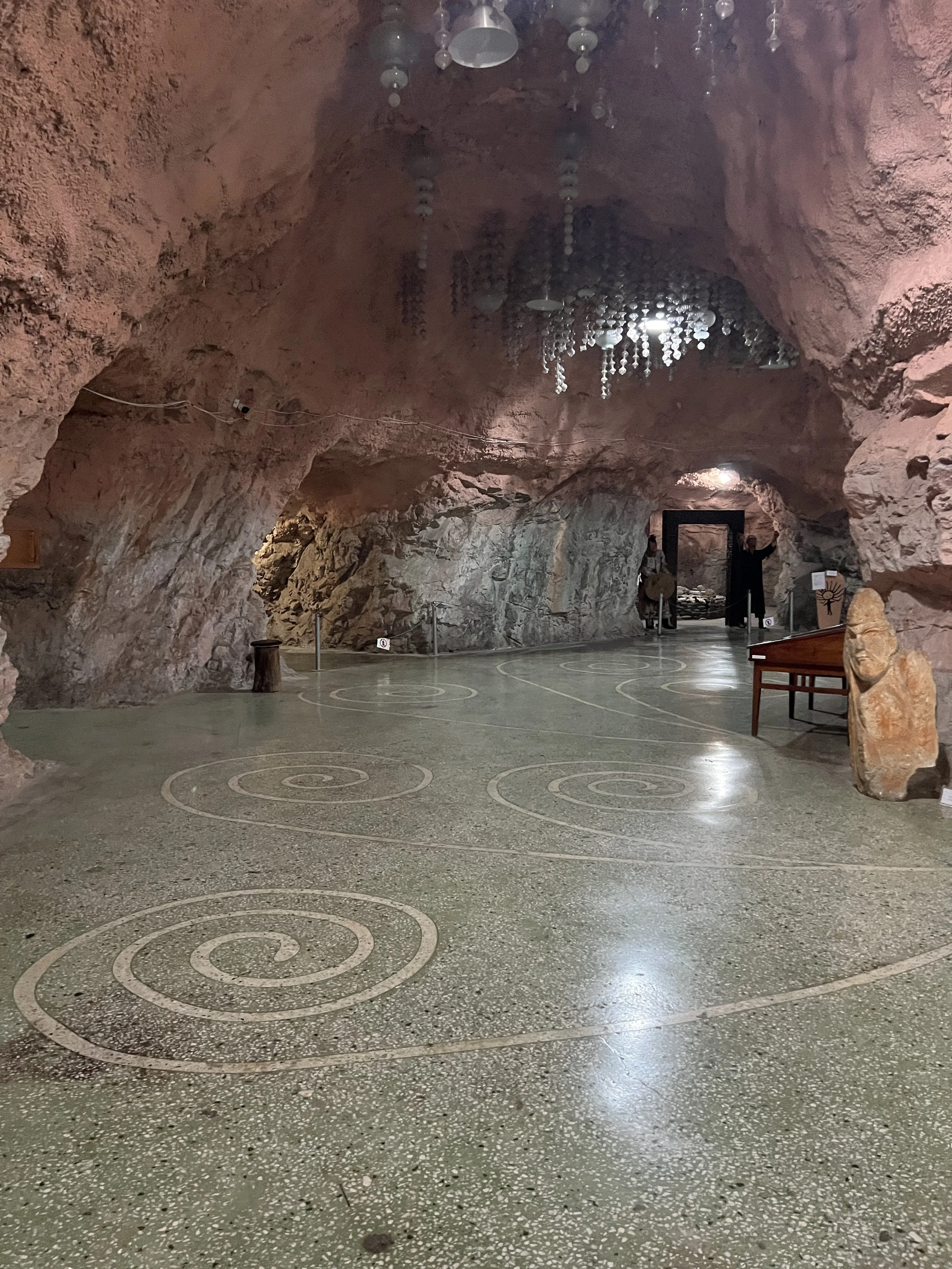Kyrgyzstan
After an uneventful flight from Moscow, I landed in the Kyrgyzstani capital of Bishkek. The president of Qatar had just visited the nation the day before, so the streets were lined with Kyrgyz and Qatari flags.
I had a group tour in Kyrgyzstan, so I decided to stay at the same hotel the tour would be staying at for my extra night I had before everyone else came. I was quite tired, so I decided to rest a bit before going out for dinner. One of the beauties of the Central Asian countries is the safety. I had no qualms about walking in the dark to explore the city for a bit and find a restaurant. I had a great meal of manti (Central Asian dumplings) and then headed to bed before my family and friend were arriving in the morning.
The next day, as a group, we had a great walking tour of Bishkek by a guide named Rahat. She is knowledgeable, speaks excellent English, and is very friendly. I cannot recommend her enough.
The following day, we headed out into the nature near the capital. We were supposed to go to Ala Archa National Park, but unfortunately, it was closed. So, we headed into a nearby mountain resort to get similar vistas of the alpine environment.
We then headed back to Bishkek to visit the Osh Bazaar. This bazaar is named after the nation’s second-largest city and features many spices and meats.
We then headed to the national museum. Interestingly, on our way we passed by a bank that advertises its connections with both Russian bank Tinkoff and the SWIFT international money transfer system. Perhaps they are showing that they can be an intermediary for people looking to get money out of Russia.
The national museum is located right on the main square in the city, with a great changing of the guard ceremony out front. The inside has been very nicely renovated and features Kyrgyz fabric work + clothing, horse equipment, and gifts the nation has received from other countries.
There’s also a beautiful view of the mountains from the second floor.
Afterwards, we stopped by the wedding palace. In many former Soviet cities, there is a large hall where people can go to get married en mass.
To round out the day, we stopped by a church and a mosaic on the side of the fabric mill. While most of Kyrgyzstan is Muslim, there is a substantial Christian community, primarily made up of ethnic Russians.
The following day, we headed out on our expedition into the nature of the country. We headed east from Bishkek towards the city of Tokmok. This city was well known for being the site of a Soviet Air Force training academy.
It is also near this city that the Burana Tower is located. This structure was built as a minaret of a mosque, but the rest of the building (and surrounding city) has since collapsed, leaving only this one tower surrounded by nature.
Nearby, there is a nicely decorated of Soviet bus stop.
For lunch, we stopped at someone’s home. I experienced a setup like this for the first time on my trip to Uzbekistan when I made a day trip from Nukus to Muynaq to see the ships left behind by the receded Aral Sea. It’s a great way to see someone’s home and try local foods.
This specific home restaurant was in the home of a Dungam family. The Dungans are an ethnic group originally from China, but many of them now live in Kyrgyzstan. It was great to see their farm and traditional dress.
We then came across another Soviet bus stop; this one was made in the style of a traditional Kyrgyz hat. After continuing our drive, we finally made it to the famous Issyk Kul lake. I enjoyed the sea air and short boat trip we took on the water. We also spent some time meandering around a Soviet Pioneer Camp where students who performed well in school could go for some recreation as a reward.
The following morning, we saw a Dungan Mosque in the city of Karakol. It’s unlike any mosque I’ve ever seen, with a very strong Chinese influence.
We then spent time strolling the streets of Karakol and came across a church that was constructed entirely out of wood without any nails. Truly an impressive feat of engineering! We also stopped by a monument honoring Soviet victory.
We then headed from the far end of the Issyk-Kul lake back West. That brought us by the Seven Bulls Rock. This large formation has lots of mythology surrounding it. In this area, we also went for a small hike up to a waterfall and to get some great views of the pine forest alongside the mountains.
Before dinner, we went to a small Dungan museum and to see an impressive piece of art one home has on its roof showing a Soviet rocket and tower from the Kremlin.
We had a very special dinner experience at another person’s home. We also had the opportunity to try wrapping our own manti— very challenging!
The next day, there was some more hiking where we saw some cosmonaut statues and another canyon.
However, the highlight of the day was seeing a group of camels and being able to walk fairly close to them.
We then began the long drive towards Osh— the Kyrgyz city in the Fergana Valley. We were originally supposed to take a mountain pass, but it was closed, so we had to take a longer route that made us miss the city of Jalal Abad.
The detour was nice, though, with us being able to stop in a beautiful rural yurt camp for an extended lunch. The one issue we had with this detour was that our drivers did not really make it clear that we were making this diversion, and they also did not plan it particularly well. On our second day driving, we left our guest house around 9 am and arrived at the next one by about 1 pm. They expected us to hang around in a small village for the entire day and then drive over 10 hours the next day, entirely erasing the ability to do any sightseeing in Osh.
That didn’t go over well, so we insisted on continuing the drive. Thankfully, the drivers gave in and continued. However, this is something I will always learn to do— confirm the itinerary and every specific detail if there is a reason the itinerary must be changed.
We then finally made it to Osh by evening. We kicked off the next day by visiting the Sulaiman-Too Sacred Mountain. Inside this mountain is a museum that talks about the local history, including the many religions that were once popular in the area, such as Zoroastrianism. Given how hot Osh was (over 90 degrees Fahrenheit), it was very nice to be inside the cool museum!
We then headed to the Osh Bazaar (the one in Osh!) and saw some nearby mosaics. Then, we saw the largest statue of Lenin I have yet to witness— a very fitting end to this Soviet expedition around Kyrgyzstan.
The following morning, we took a Pegasus Airlines flight to Istanbul. I spent the day with a good friend of mine before beginning my journey to Equatorial Guinea that evening.
Conclusion:
I had an incredible trip through Kyrgyzstan. I highly recommend the country for anyone who loves desolate countries where you can feel far away from the hustle and bustle of metropolises.
Kyrgyzstan is UN Country 81/193 and TCC Region 98/330 for me.







